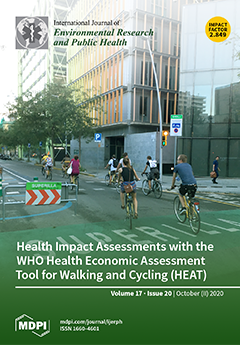This study aimed to investigate possible associations of the susceptibility to congenital heart defects (CHDs) with
AXIN1 rs1805105, rs12921862 and rs370681 gene variants and haplotypes, and
AXIN2 rs2240308 gene variant. Significant associations were identified for
AXIN1 rs370681 and
AXIN2 rs2240308 variants.
AXIN1 rs370681
[...] Read more.
This study aimed to investigate possible associations of the susceptibility to congenital heart defects (CHDs) with
AXIN1 rs1805105, rs12921862 and rs370681 gene variants and haplotypes, and
AXIN2 rs2240308 gene variant. Significant associations were identified for
AXIN1 rs370681 and
AXIN2 rs2240308 variants.
AXIN1 rs370681 variant was significantly associated with decreased odds of CHDs (adjusted OR varying from 0.13 to 0.28 in codominant, dominant and recessive gene models), while the
AXIN2 rs2240308 variant was associated with increased odds of CHD in the dominant model. The haplotype-based generalized linear model regression of
AXIN1 rs1805105, rs12921862 and rs370681 variants revealed that C-C-C and C-C-T haplotypes significantly increased the risk of CHDs (
p < 0.05). No significant second order epistatic interactions were found between investigated variants (
AXIN1 rs1805105, rs12921862, rs370681, and
AXIN2 rs2240308). Our conclusion is that
AXIN1 rs1805105, rs12921862, and rs370681 (C-C-C and C-C-T) haplotypes and
AXIN2 rs2240308 contribute to CHDs susceptibility.
Full article





